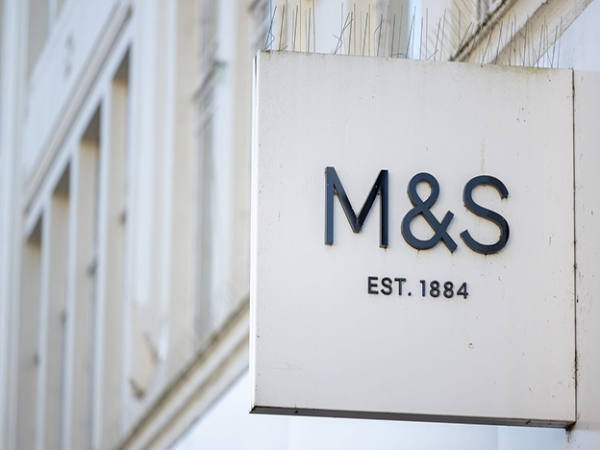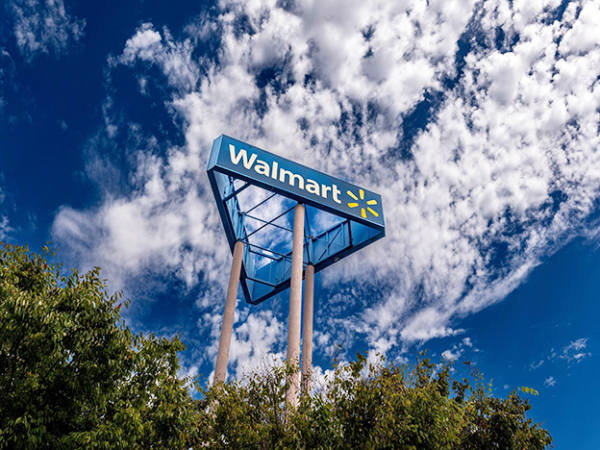The story of the UK gaming and gambling sector has been one of consolidation, with a once sizeable list of companies now reduced to just four. The key to accessing higher growth and generating the best returns in this space today comes down to the shape and relative size of the companies’ online offering (relative to in-person play) and the extent of investment in the fastest-growing market, US online sports betting.
While there has been rapid growth in UK online gaming, the government's new gaming white paper (‘High stakes: gambling reform for the digital age’) is a fresh issue for UK operators, and while primarily targeting problem gamblers, it will inevitably impact all players.
Stake limits and data sharing could materially reduce total revenues in UK online gaming as problem/addicted players have been responsible for a material amount of the industry’s total revenues. Therefore, a large footprint in the UK online gaming market is less desirable, especially as it is likely to be accompanied by a sizeable high-street presence. Betting shops were hit hard by Covid and the industry has seen a systemic shift towards online gambling, meaning that the high street has become something of a millstone for operators.
Internationally diverse
Flutter Entertainment
Flutter Entertainment (FLTR) is the largest of the UK gambling stocks, boasting a market cap of over £28bn. It is an internationally diverse business led by its US business, which is fractionally larger than both its UK and Australian businesses. It also has a meaningful presence in other overseas areas including the fast growing Brazillian market and Europe's largest market, Italy. It owns a vast array of the largest names in the industry, including FanDuel (the heart of the US business), Sky Bet, Sportsbet, PokerStars, Paddy Power, Sisal, tombola, Betfair, FOX Bet, TVG, Junglee Games and Adjarabet.
The US operations are the key driver through the explosion in online gaming and sports betting following various changes in state and federal law since 2018: Flutter has a 50 per cent share of the sports market betting in the US in addition to more than 20 per cent of the online gaming market.
A limited UK retail presence, a strong programme of acquisitions and rapid growth in the US allowed Flutter to avoid a Covid earnings hit and, largely thanks to the US investments and elimination of start-up losses in many states, group profits (earnings before interest, tax, depreciation and amortisation, or Ebitda) are today more than double 2019’s, and are forecast to be quadruple 2019’s by the end of this year. US market growth has only recently got going, with sports and gaming together in 2022 worth around $9bn in gross stakes (up 60 per cent on 2021) but forecast to hit $30bn by 2030 (gaming to grow faster than sports) – a compound annual growth rate (CAGR) of 16 per cent.
Flutter’s profits are likely to grow faster than this as many local and product markets are still at an early stage, with many still loss-making – Ebit growth between 2022 and 2025 is forecast to hit 40 per cent CAGR.
This is a great outlook, but is there value here still? The share price is today three times pre-Covid levels and, even after shedding much of 2020’s combined Covid and US liberalisation share price boom, the stock is back at close to an all-time high.
The best time to buy Flutter's shares looks to be behind us; since last July the price has more than doubled and, in the near term, the stock looks expensive on a price/earnings (PE) ratio of 41 times and an enterprise value (EV)/Ebitda ratio of 20 times. Even if the forecast growth is delivered, the PE by 2025 will still be higher than 20 and that looks demanding even with the high rate of growth.
After 2025, the key US market will be maturing and it could then become tough to support a very high rating. This is a very strong equity story but it really feels as though that positivity is fully (possibly more than fully) reflected in the price. Wait for any weakness, which could easily follow analysts increasingly moving to a more neutral stance.
Entain
Entain (ENT) has less than a third of Flutter’s market cap, at £8.5bn, but in profit terms it is not that much smaller. Its Ebit this year is forecast to be £700mn, while Flutter is expected to deliver £1.15bn. The difference is all in the rating, and that stems from the operational profile; it’s all about the US footprint. Entain is dominated by the UK where it still has a sizable retail footprint (Ladbrokes, Coral, Gala Bingo). This means a material part of its earnings has more limited growth potential and is more exposed to the effects of the white paper; this all attracts a lower rating.
There is a US footprint through a joint venture with the largest player there, MGM (US:MGM), called BetMGM. This offers online sports and casino gaming and in 2022 generated an impressive $1.4bn in revenues, however it is not expected to break even (even at the Ebitda level) until the back end of 2023, more than five years after its establishment. There had been some hope (even expectation) that MGM would bid for Entain, but in March this year MGM’s chief executive said: “[the] answer on Entain is no”. This led to the shares falling by around 15 per cent.
Entain does have other interests in the US in physical and online poker segments, but the mainstay in this important market is the joint venture. It is not ideal that Entain is only a partner in this venture and that the partner is realistically the powerhouse, but this is a strong venture – $2bn (£1.5bn) of revenues are within reach this year and that compares with £4.5bn for the rest of the group combined. Analysts see BetMGM accounting for c40 per cent of the group’s value even before breaking even and, with growth of more than 75 per cent in the first quarter and sustained market leadership (that is, of course, due to MGM) it is possible that doing a sum-of-the-parts here could easily add up to more than today’s share price.
Back-of-the-envelope sums might assume $3bn of revenues for BetMGM (very possible by 2025), so margins perhaps at 15-25 per cent (Bank of America thinks 30 per cent is possible) could mean that Entain’s stake alone, based on Flutter’s PE, could be worth more than £5bn. That is a lot of ‘ifs’, but there does seem to be value to chase here with the shares potentially worth 33 per cent more than today.
888
888 (888) is now the minnow of the UK-listed sector, with a market cap of just over £300mn; that is just one-sixth of its value at the start of 2022. The main reason for the share price fall has been a number of licence suspensions impacting many of its largest players following alleged lack of controls, especially related to money laundering. Another issue for 888 has been its geography: it is light in the US, has a sizable bias towards slower-growing markets such as the UK and southern Europe and is still pretty reliant on retail betting.
The shape of 888 today is relatively new, having prior to 2021 been almost exclusively online and 90 per cent biased to the UK and Europe. William Hill was acquired in September 2021, bringing a large retail footprint (1,400 betting shops) and an extra 14 per cent share of UK online gaming via the Mr Green brand. Early that year, the US position had been enhanced by the formation of a joint venture with US sports publication Sports Illustrated. This is an interesting choice as there is no association with betting at Sports Illustrated and this does feel like something of a fishing exercise, assuming that players will follow the Sports Illustrated brand, encouraging either new online gamblers or migration. That is a very different proposition from aligning with a known betting brand such as MGM. 888 seems also to be hoping to push this new venture through all of the channels of Sports Illustrated’s owner, Authentic Brands Group (mostly fashion apparel) – this might all work out well, but is a long shot.
The combination of a non-standard approach to growing US sports betting (there was already a reasonably sized gaming business organically in the US), the risk of regulatory penalties or restrictions and the bias to slower-growth markets should mean a large discount to the peer group. However, on the consensus estimates, the PE for the next full year (to December 2024) is just 3.5. 888 is a classic coin-flip proposition – the consensus is wrong, meaning the true PE is more like 15 as profits collapse or the shares are exceptionally cheap. It is clear, however, that the market simply doesn’t know which is right, and that makes this interesting.
At this level of rating, it is much more like taking a bet (how apt), with investors needing to know that buying today is like backing a longer-odds horse – you could either lose your stake or get paid 3, 4, 5 or 6-to-1. This is an interesting one for the more risk-averse, but is probably one to consider parking in a small quantity at the adventurous end of your portfolio.
Rank
With its more broadly based leisure business, Rank (RNK) is likely to be the one least impacted by the UK white paper because it has by far the largest in-person or retail footprint – only UK online players are now in focus. That said, Rank has no presence, today, in the more dynamic US market. Its operations are primarily its 51 UK casinos, bingo (Mecca), Enracha (largest Spanish bingo operator) and online bingo in Spain, plus a selection of online gaming platforms related to its in-person brands. Around 25-30 per cent of revenue comes from digital, but margins here are low (c7 per cent). It also does not have any material presence in sports betting, either in-person or online.
Covid hit Rank much harder than its competition and its Ebit dropped from around £70mn pre-pandemic to losses of almost £150mn by 2021. The first return to full-year profit is expected this year (to June) but with only £20mn, and even by 2025 Ebit is forecast to be 25 per cent below 2019.
Inevitably this has driven poor returns, with a total shareholder return (TSR) over five years of -60 per cent. This is undoubtedly a recovery stock, but as it lacks that extra dynamism from the US, once profits are restored it is likely to show more pedestrian growth. Having already almost doubled since the post-great financial crash low in October, there doesn’t look to be much value in the shares.










